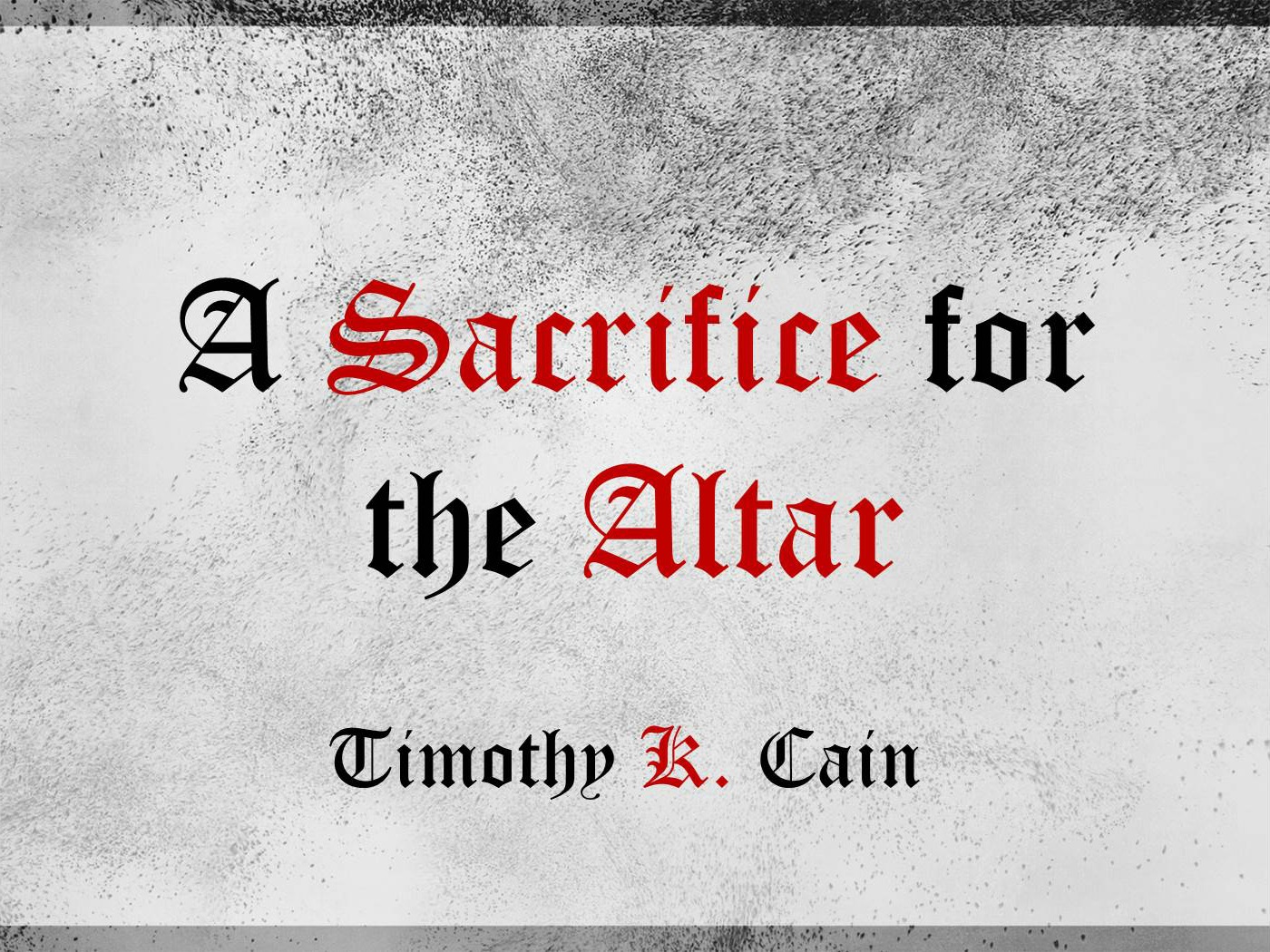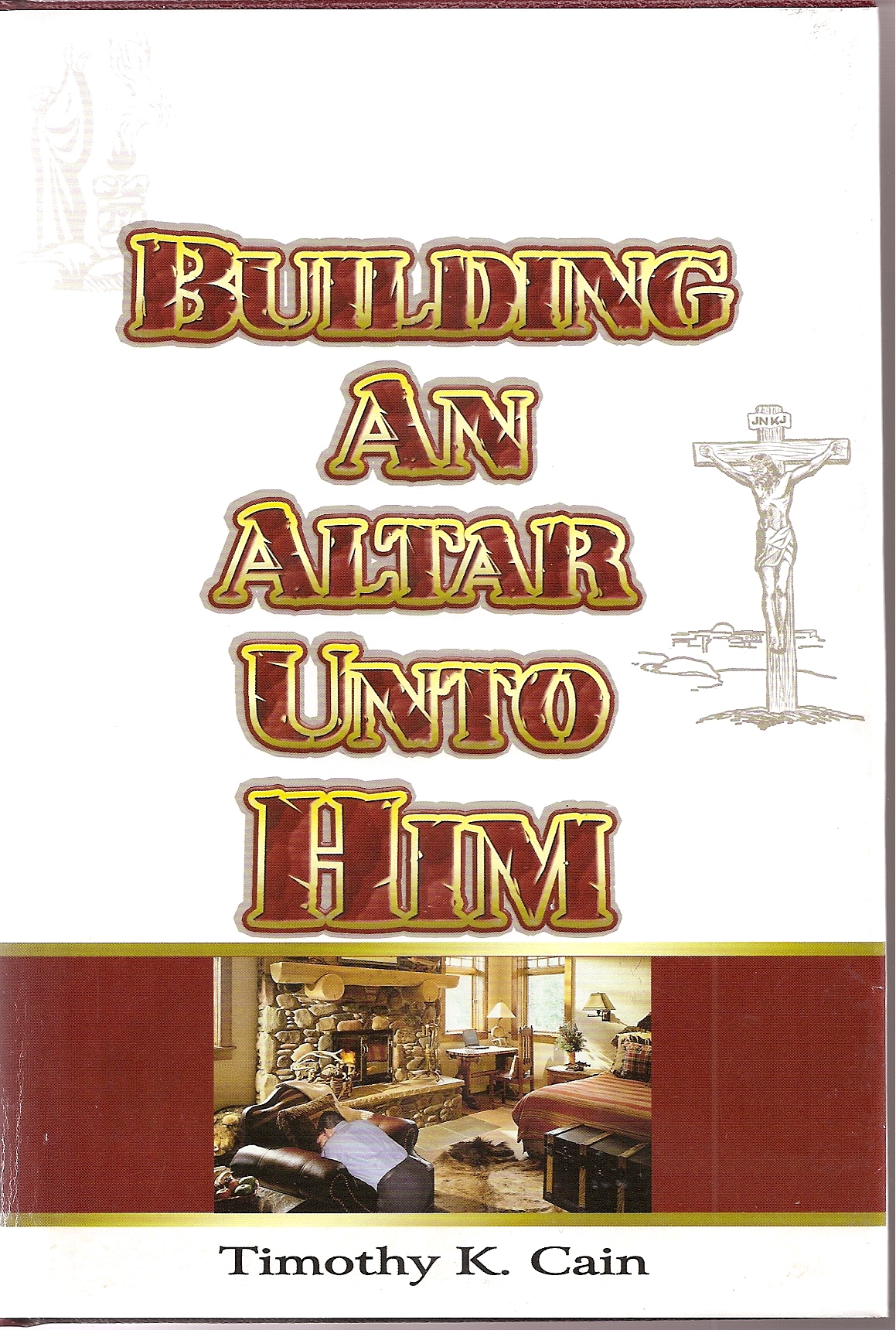For the purpose of this examination, we will only be looking at the OT sacrifices offered on the sacrificial altar, classified as “most holy.” This encompasses the Israelites’ sacrificial altar worship from the patriarchal period to its conclusion in the beginning of the second Temple period under the priesthood of Ezra and Nehemiah.

By Timothy K Cain
To View the Entire Article, Click Here
To Download the Entire Article Directly to Your Computer, Click Here
To View the Outline, Click Here
To View the PowerPoint, Click Here
An altar experience cannot be complete without a proper sacrifice! This was true of Moses in the OT, of Jesus Christ in the NT, and it is true of us today. As previously mentioned, the sacrifice is the second required element of a complete altar experience. The offering of sacrifices is also the second aspect of the command found in Exodus 20:24, “sacrifice thereon thy burnt offerings, and thy peace offerings.” An acceptable sacrifice seems to be a very critical part of altar worship. Beginning with Adam, God has always required of mankind a sacrifice for the expiation of our sinful nature.
In order to better understand the element of sacrifice, it’s essential to look at its use in a very broad context. There are three frames of reference necessary to be looked at that will help us develop a more complete picture of a proper sacrifice. The first is the offering of sacrifices in the OT. The second is sacrifices of the NT. Third is sacrifice as it is required of us today for a complete altar experience. Time and space will not allow for an exhaustive look at each of these frames of references as a whole. However, looking at these frames of reference in the context of the whole picture will hopefully give us a greater sense of the responsibility that we have today in terms of sacrifice.
Within the OT, we will begin by looking at the earliest references of sacrifices. Let us first of all look at the Hebrew words that have been translated into the English word sacrifice. In the majority of references from the OT text, there are two Hebrew words which are translated to the English word sacrifice. The first and most commonly used is the Hebrew word zebach, meaning “to slaughter, i.e. the flesh of an animal; by implying a sacrifice; or the offering of a sacrifice.” The second word is the primary root of zebach, which is zabach. The meaning of zabach is “to slaughter an animal (usually in sacrifice): kill, offer, (do) sacrifice, slay.” Therefore, the Hebrew words used in the translation to the English text fundamentally share the same meaning and purpose, that purpose being to cause the death of an animal for a gift to a deity. So we can conclude that when looking at OT references we are generally referring to animal sacrifices. This further explains the use of the term “sacrificial altar” used by OT scholars when referring to the outer altar, making a distinction between the outer altar for sacrifices and the inner altar of incense which was located in the “Tent” or the “Holy of Holies.”
Beyond the general etymology of the word(s) translated to mean sacrifice in the English are the types of sacrifices. This will help guide us through the OT as we take a closer look at the use of sacrificial altars. The type of sacrifice brought for an offering also helps define the end purpose of making the sacrifice. In talking about sacrifices in the OT, there is a further distinction that needs to be made, that being the basic distinction between sacrifices and offerings. “Thomas Aquinas defined the distinction between offering and sacrifice as one of ‘genus’ and ‘species.’ Offering constitutes the more general category of gift or oblation, while sacrifice is a specialization of this category which entails a more specific means of delivery to the deity.” It should be noted that there is no single team which defines how or in what manner an offering becomes a sacrifice.
To View the Entire Article, Click Here
To Download the Entire Article Directly to Your Computer, Click Here
To View the Outline, Click Here



